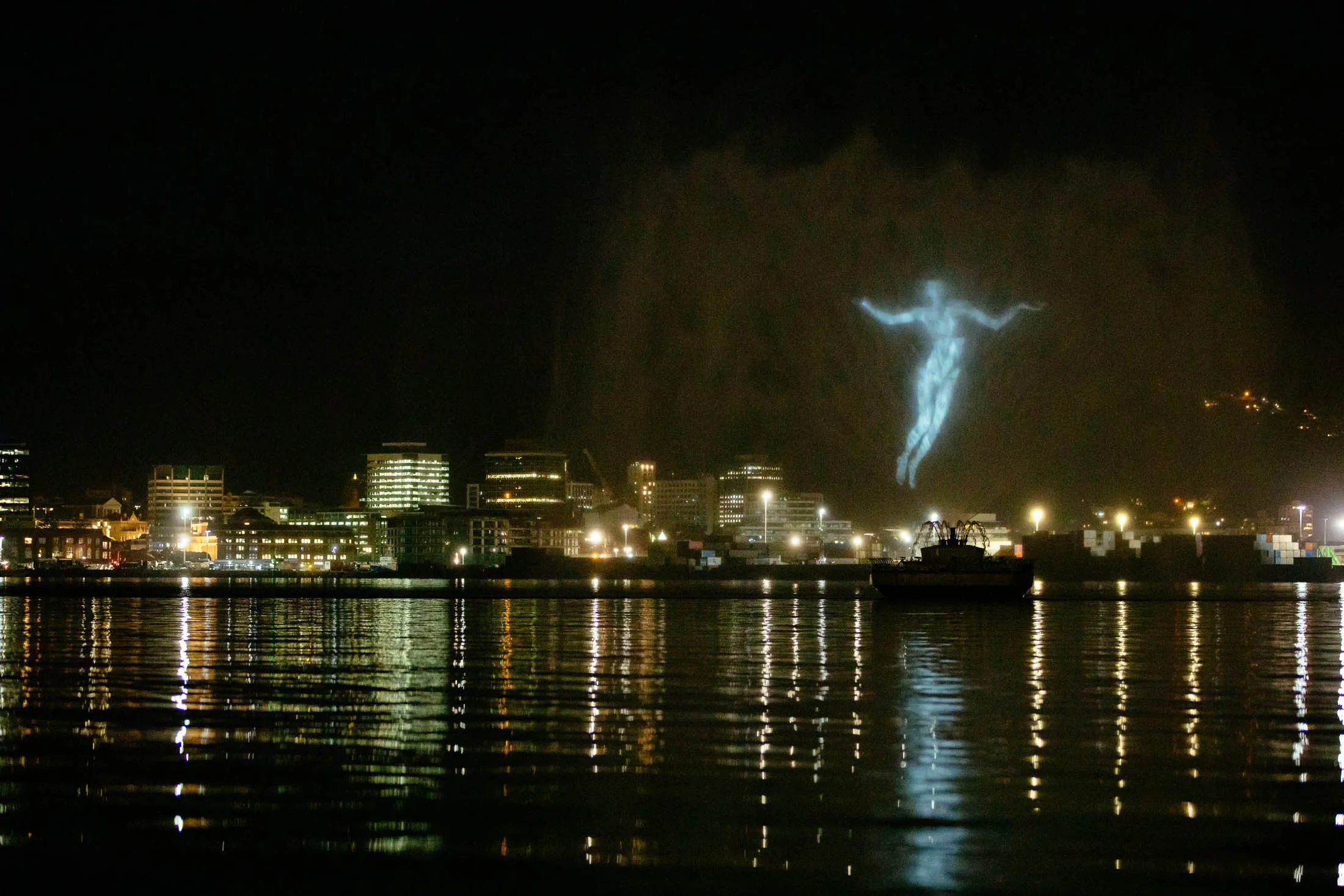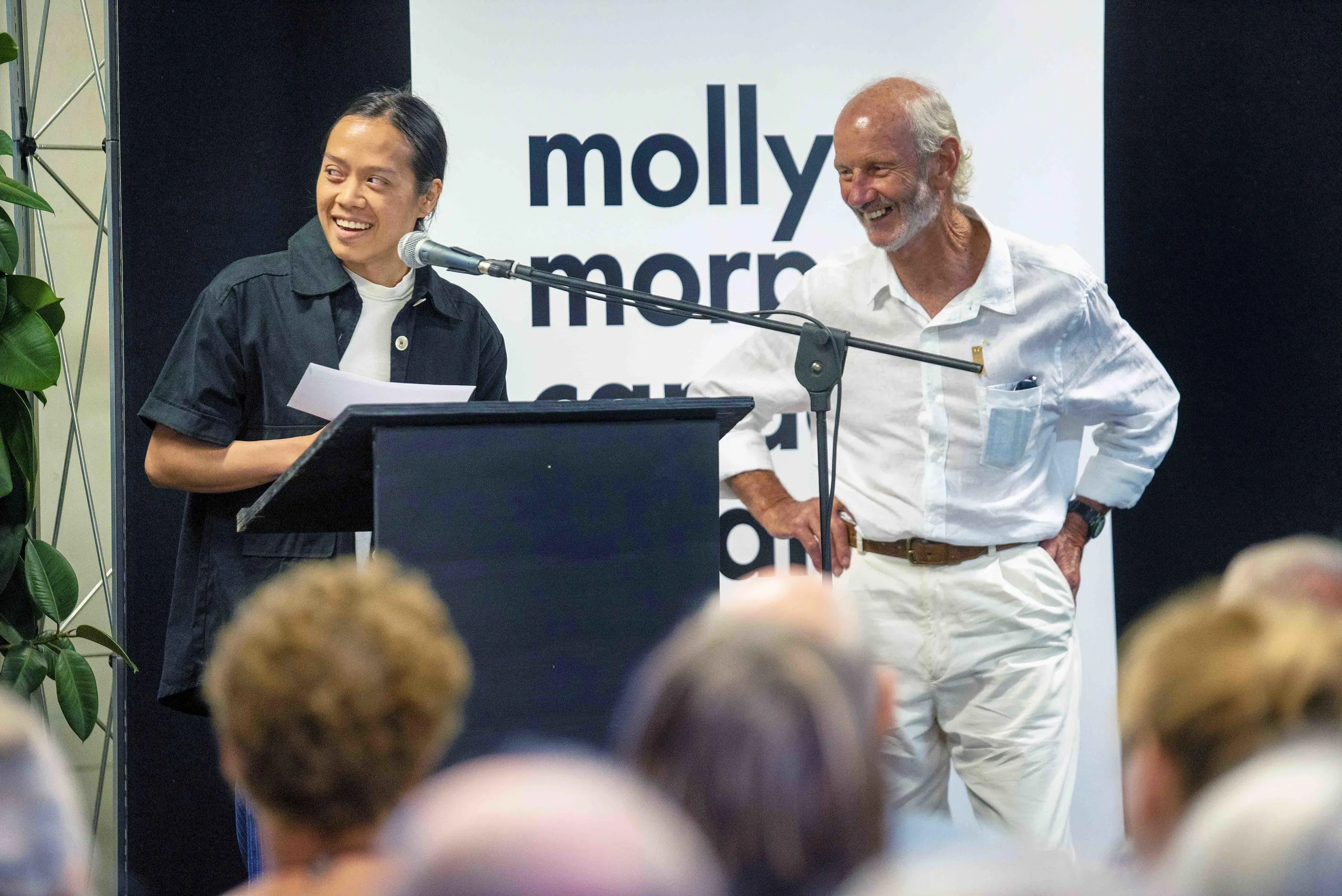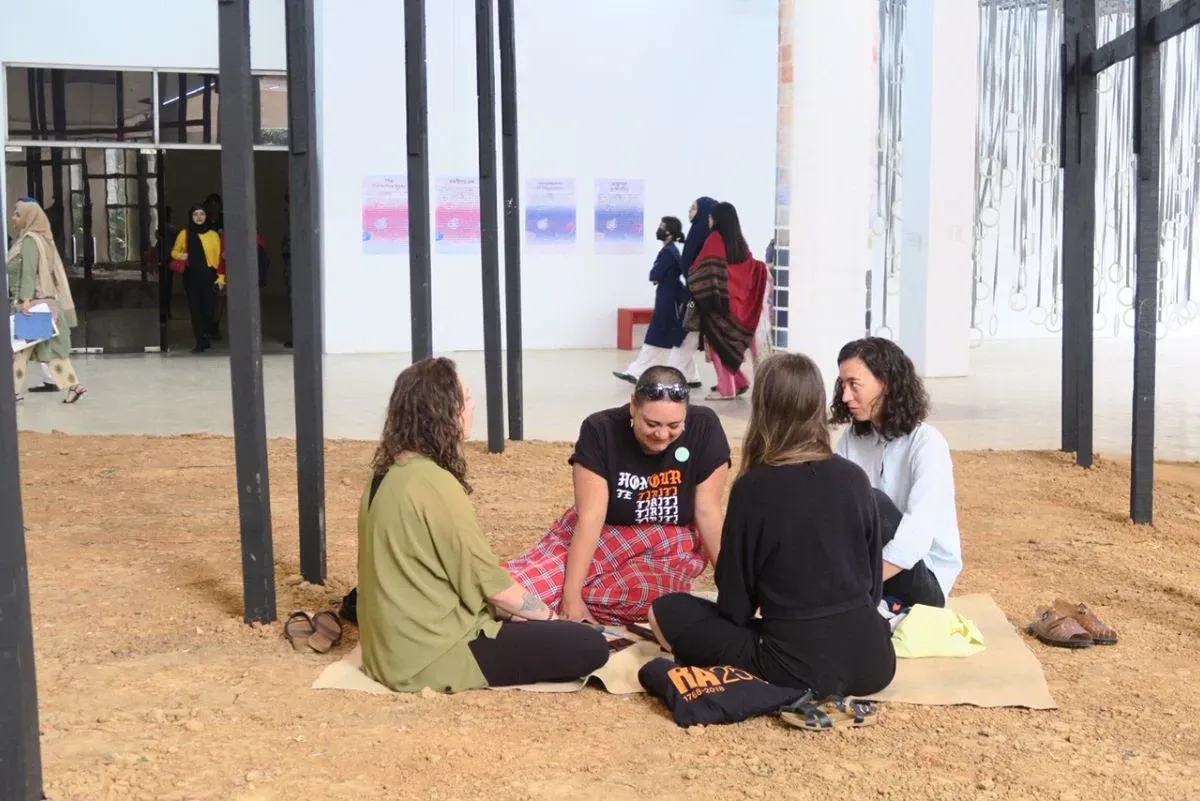Reviving the Dying Art of the Art Review
Written by
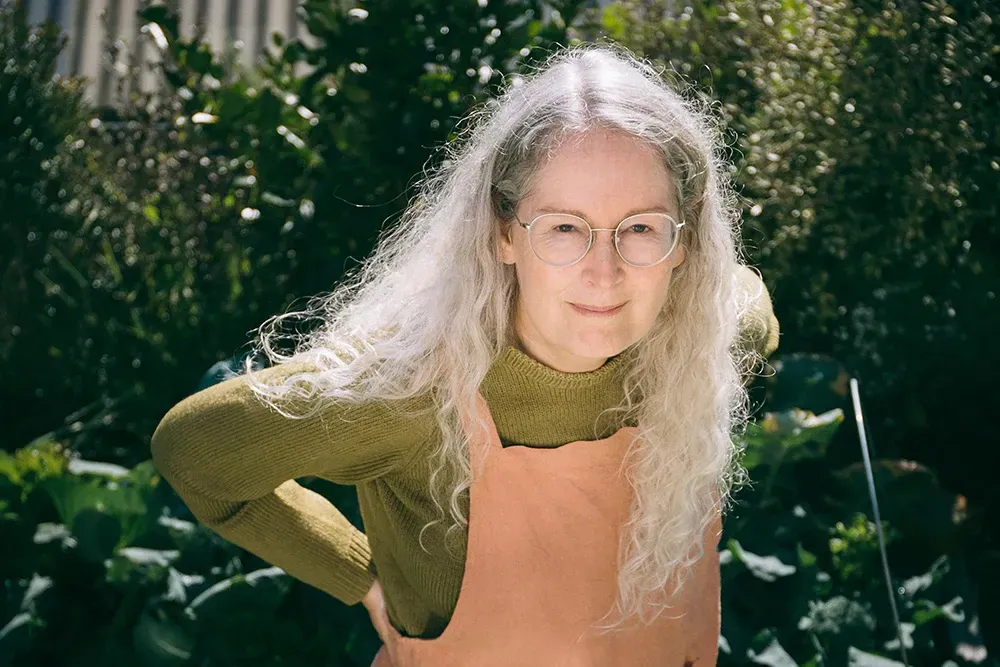
Reviews Matter
2020 evidence that endangered species, the arts review, is worth saving: the effect of Dan Kois’s review, published 29 January on US site Slate of Elizabeth Knox’s outstanding novel The Absolute Book. Clearly not afraid to send a viewpoint out as clickbait, the title was “This New Zealand Fantasy Masterpiece Needs to Be Published in America, Like, Now.” The result, as Steve Braunias writes on Newsroom has been a US rights bidding war, a resulting six-figure deal with Viking Penguin “and a “flood” of interest from US film and TV studios”.
Like RNZ Concert, reviews might not draw the biggest audience share but they can be enormously influential. So how to fund them? Creative New Zealand has become a key stakeholder for initiatives, picking up where newspapers dropped away. And things got fiery (with Braunias a leading critic) late last year when the New Zealand Review of Books Pukapuka Aotearoa didn’t get funding and ceased publication after almost 29 years.
News to hand though: just this month an interim working group has been set up by publisher Peppercorn Press to work towards a publication to replace it, as Lynn Freeman found out talking to Peppercorn Press’s board member Kathryn Carmody on RNZ. Thanks to money raised through crowdfunding, a feasibility study is being put in place.
And in an interesting development in Australia, The Sydney Morning Herald and The Age have announced they will increase the number of their arts reviews thanks to a grant from The Copyright Agency and the Judith Neilson Institute for Journalism and Ideas. $150,000 per annum will mean an additional 100 reviews covering visual arts, theatre and books. And yes, I’m doing the simple maths there, folks: $1500 per review leaving you wondering what is the publisher-to-critic cut.
What is telling is that the funding has come from philanthropy - Judith Nelson committed $100 million to setting up a centre for journalism in 2018. Even so, the following comment could be a gamechanger. “It's important for any serious newsroom to cover the arts properly and this includes criticism," said the Herald and The Age's Group Executive Editor James Chessell. Aotearoa, your call.
Doing Enough for Indigenous voices?
Another call here that will only get stronger, and has been embarrassingly slow to change: where are our Māori and Pacific Island critics in the mainstream? Here’s Canadian theatre maker Yolanda Bonnell on Vice on why she’s not asking white critics to review her show.
“Indigenous performance has been grossly under-reviewed and while the tide is shifting, the lens with which predominantly white critics view the work has been problematic.”
In the follow-on from Taika Waititi winning an Oscar, charging up indigenous young people worldwide to follow their creative dreams, it’s time to take stock on the ways our culture doesn’t exactly assist this.
“The reality,” writes Raymond Sagapolutele on the RNZ website this week, “is that pathways for indigenous kids in my part of Tāmaki Makaurau are getting harder to find locally. The kids that want to sing, dance, write, paint, photograph, print, weave, and make jewellery have lost access to a major part of what was an incubator of South Auckland creativity.”
He is writing about the closure of the Manukau Institute of Technology (MIT) creative arts programmes and before that in 2017, PIPA, the Pacific Institute of Performing Arts. PIPA, Sagapolutele notes, helped give birth to a contemporary resurgence of Pacific Island performing arts.
Sagapolutele gives the example of the role PIPA students and their director Anapela Polata’ivao played in the journey of Tusiata Avia’s Wild Dogs Under My Skirt all the way this year to New York. Avia writes this week powerfully about the journey of the work, and the qualities and the people that made it shine here on The Big Idea.
And in another challenge issued from Australia to our biggest arts festivals this week, the Perth Festival opens with a week devoted solely to indigenous work - a first in Australia. (Though I note without an indigenous curator, unlike our own Tauranga and Tairawhiti festivals).
"Only 12 years ago when I started [as artistic director of Ilbijerri],” says Rachael Maza to the ABC, who is co-director of Black Ties (soon at Auckland and Wellington arts festivals), “the saying at the time was 'Yeah, it's risky programming black works, you don't get bums on seats'."
Meanwhile the Sydney Biennale opens mid March with Nirin, a “first nations led” biennale, running on a theme of sharing global indigenous knowledge. That festival is being led by Brook Andrew, the first indigenous artist to lead the biennale. Sydney Festival, meanwhile, has been led by indigenous theatre maker Wesley Enoch since 2017.
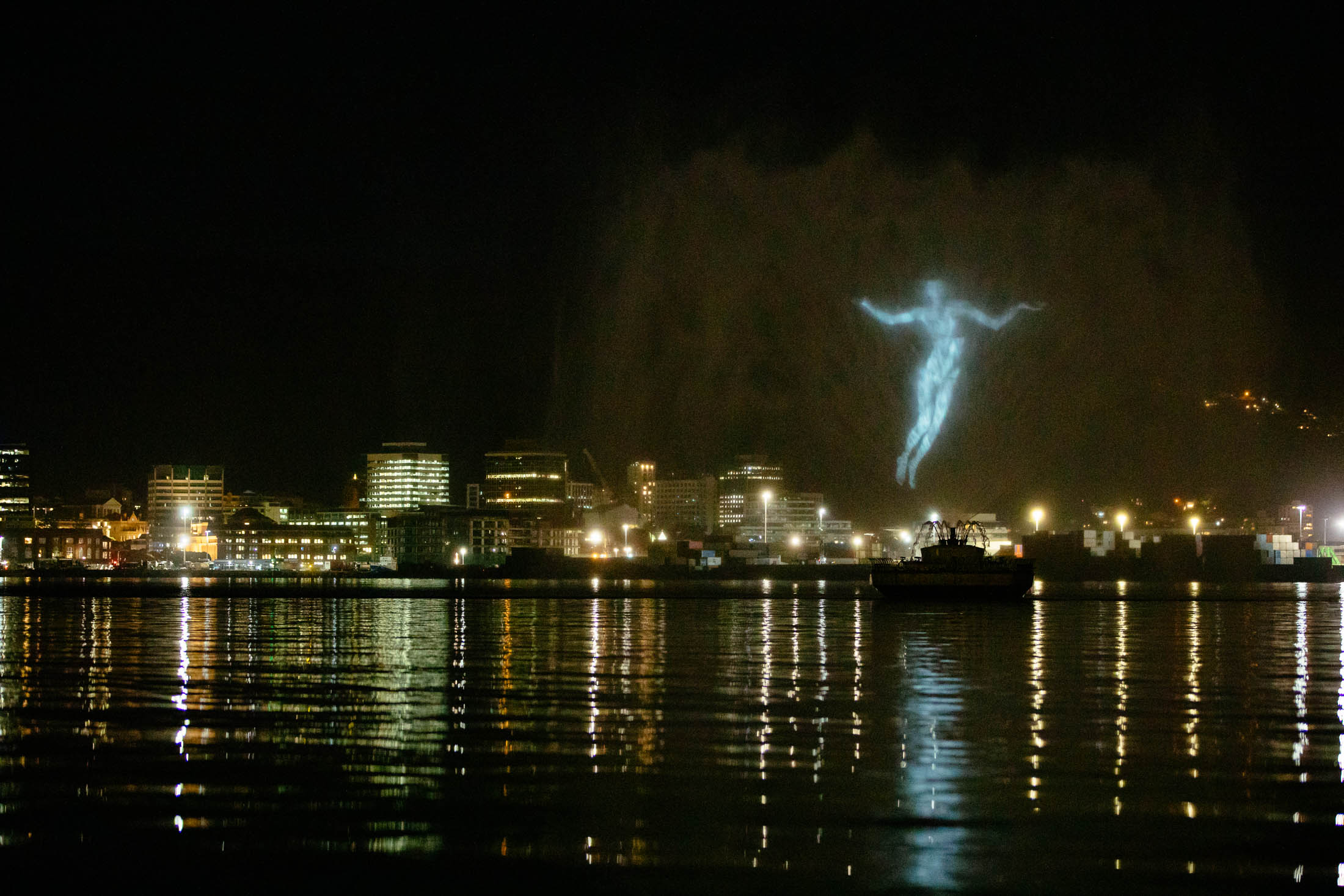
"Diver" by Sam Trubridge, Wellington. Image: Jono Tucker
Making a Public Display
A Sam Trubridge moving image work of his brother, champion freediver William, has been turning heads and media in Wellington this week - here’s a TVNZ Seven Sharp item. The work, projected on a water screen perfected by Joe Bleakley, attached to the Oriental Bay Fountain, shows a diver erupting from the fountainhead and playing in the watery air. It’s playing ahead of the start of Sam Trubridge’s ambitious and increasingly mobile Performance Arcade programme next week.
This follows in the wake of another ambitious permanent moving image work unveiled already this year, Lisa Reihana’s giant retelling of the story of the separation of Ranginui and Papatūānuku at the Aotea Centre - a TVNZ 1 News interview with Reihana here.

From SILVERCITY, an installation by Mark Schroder, Christchurch
Getting Mobile
There are other art projects getting mobile this summer. On the road in a truck is The Nomadic Art Gallery, the vision of European travellers Arthur Buerms and Eugénie Coche. The truck becomes a gallery and installation space inside and out to provide room for emerging artist projects. Their first show at the Lakehouse Arts Centre in Takapuna (as you can follow on their Facebook page) was work by Ada Leung and Minrui Yang. Since then, Andy Leleisi'uao has done some beautiful tagging on the side. This week, they open at the Hamilton Gardens Arts Festival (fulsome programme here).
After that, it’s to Wellington for a residency at Te Aro Wine and then street festival Cubadupa. That last appearance is part of a public art programme your author is putting together, details of which were announced this week. It includes projects by Lema Shamamba and Vicente E Ovale from Auckland, Instagram vlog Glad We Did That and Curators of Cuba, a roving discussion series around Cuba Street area galleries.
Meanwhile, in a satellite Physics Room project installation in Christchurch, Silvercity by Mark Schroder is open out of town at the beach in New Brighton Mall on Saturdays. It consists of offices for two companies in adjacent vacant shop spaces, ‘Argentex’ and ‘ArgenTech’ - all part of Schroder’s continued exploration of boom and bust economic cycles, scams and fronts. Schroder creates fictitious companies with all their attendant corporate paraphernalia.
And remember bold plans from Te Papa about making the national collection more accessible through touring? Also on tour is a work piece by Rodin and Renoir from the Te Papa collection to Stratford’s Percy Thomson Gallery, with the Rodin the lynchpin for a community exhibition. Here’s a catalogue from Te Papa of what’s been on tour in the past.
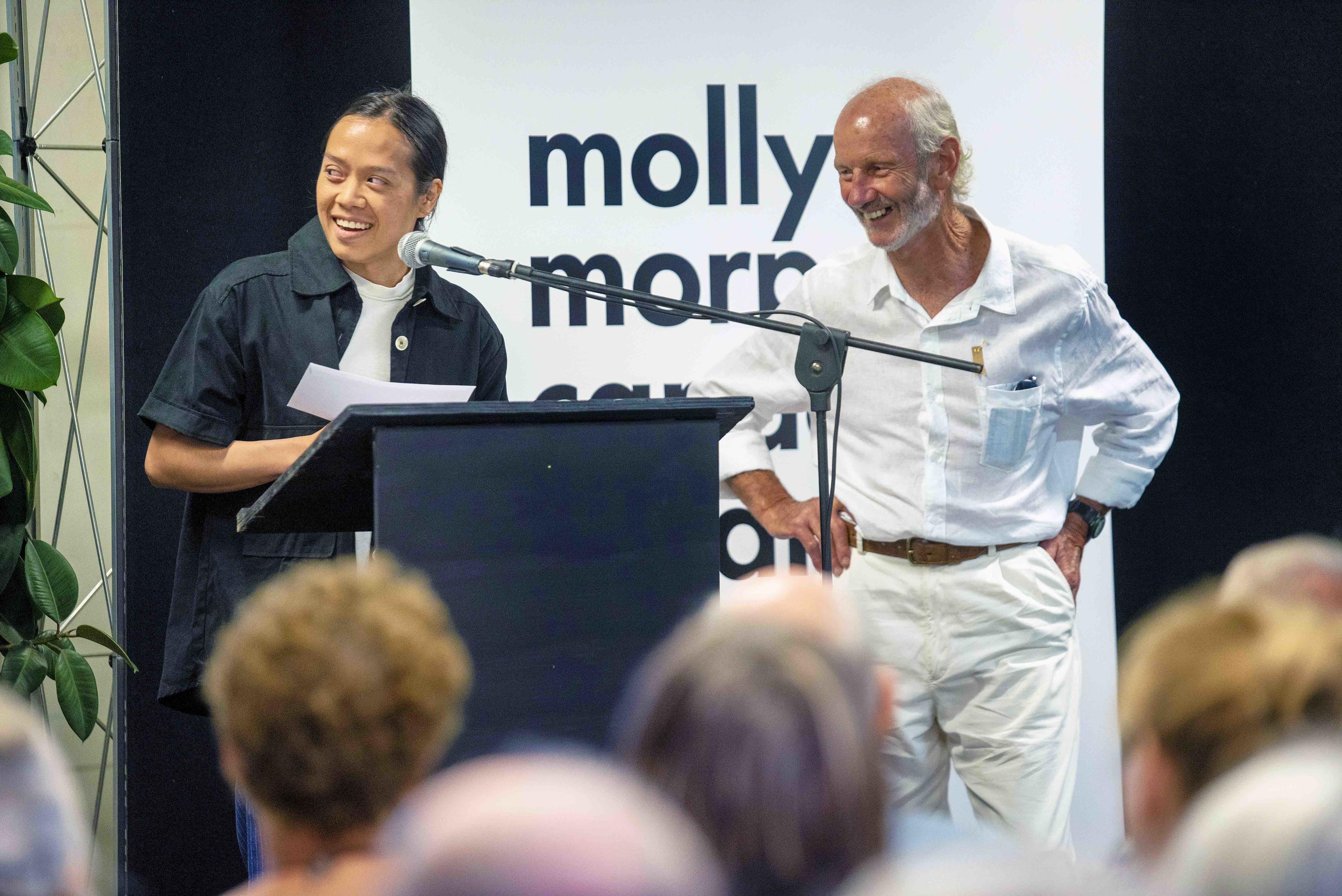
Molly 3D-winner Sorawit with Greg Reid. Image: Troy Baker
3D Award Winner
The results are in for Whakatāne’s national Molly Morpeth Canaday Award for 3D Art. The major winner is Sorawit Songsataya for ‘Morning Dew’. The comments by judge Ruth Watson on all the winners is worth reading.
“The artwork is charmingly titled Morning Dew,” writes Watson of Songsataya’s work, “but the dominant medium is resin, nasty and toxic. The little plant remnants held inside are now pickled, preserved for examination, never to move or grow again, frozen and magnified in their stasis.”
Other Arts News in Brief
Wellington dealer Suite will open a second gallery on Auckland’s Ponsonby Road. It’s a move helped, director David Alsop tells me, by none of his artists being currently represented in Auckland. They open in late April with Richard Lewer. This is, I think, the first Wellington gallery to open in Auckland since Andrew Jensen in the late 90s.
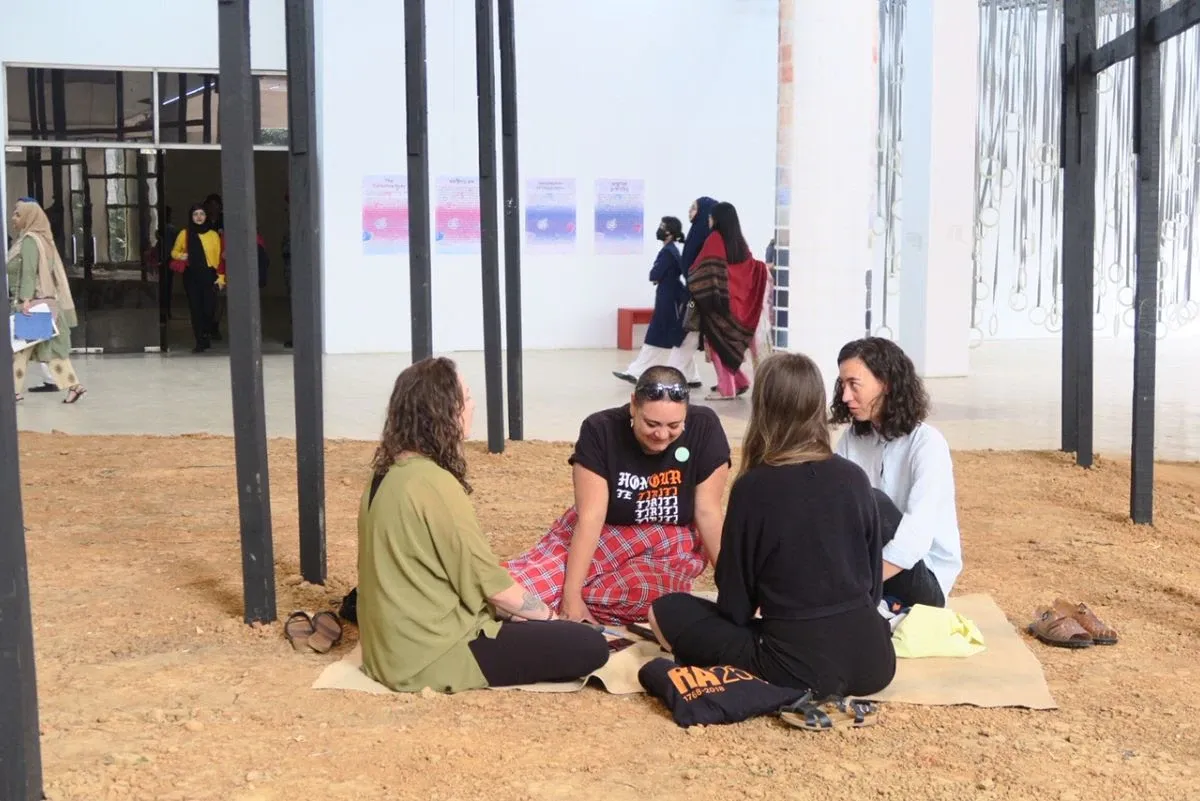
Mata Aho Collective at the Dhaka Arts Summit. Image: Pauline Autet
Art collective Mata Aho have been at the Dhaka Art Summit in Bangladesh where, as Contemporary Hum’s Pauline Autet reports in their latest newsletter, their project was “to practice a type of song or waiata customarily composed by women called a pātere, and which was recently written especially for them by musician Te Kahureremoa Taumata. Since exhibiting in documenta in 2017, Mata Aho have exhibited internationally a number of times and have felt the need to have a song of their own, which can be used to show support, celebrate and bless a new work installed, or as a way to present themselves to the world with integrity.”
A new bridge over Ōtara Creek in South Auckland also works as a public artwork by artists Henriata Nicholas and Marc Lenton, opening on Thursday. The pair have previously collaborated on a work for the Mount Albert Railway Station.
Film director Chelsie Preston Crayford has released her outstanding short film, Falling Up on Vimeo. The film won the Jury Award at 2018 New Zealand International Film Festival and is about the emotional upheaval and strains of solo parenting following a relationship breakup. It features Preston Grayford with her own wee daughter Olive Marama.
Also in short film online this week Loading Docs have announced their 2020 programme.
